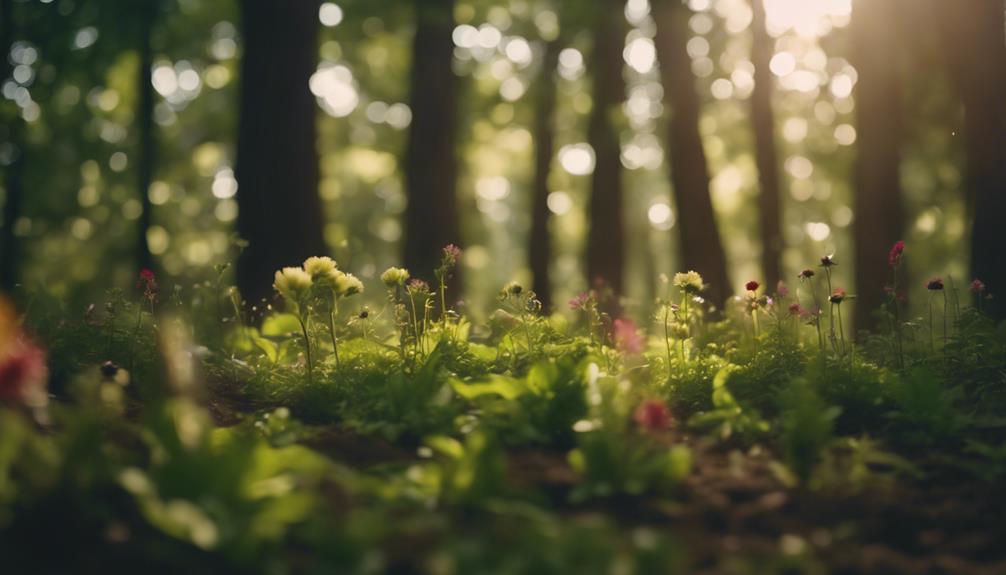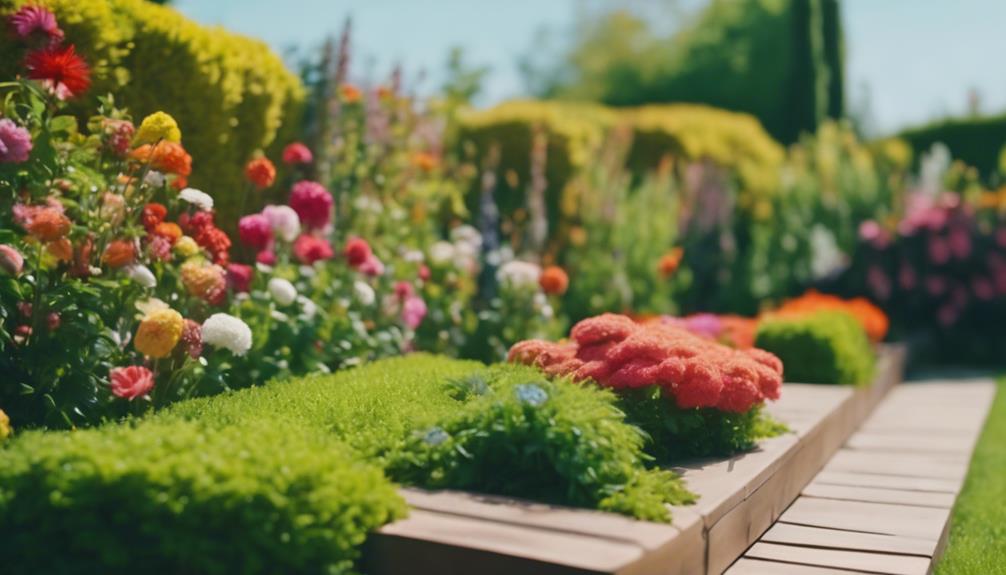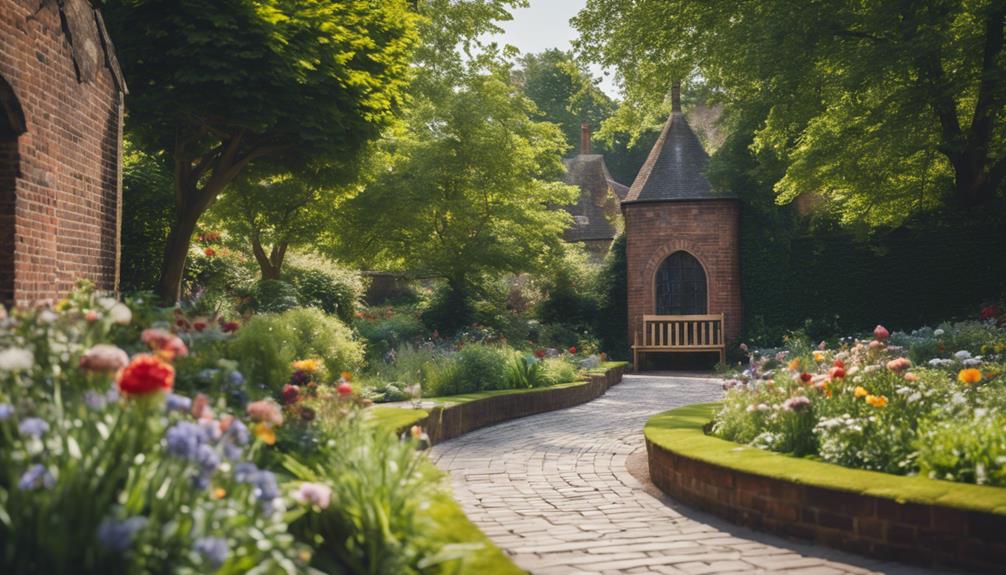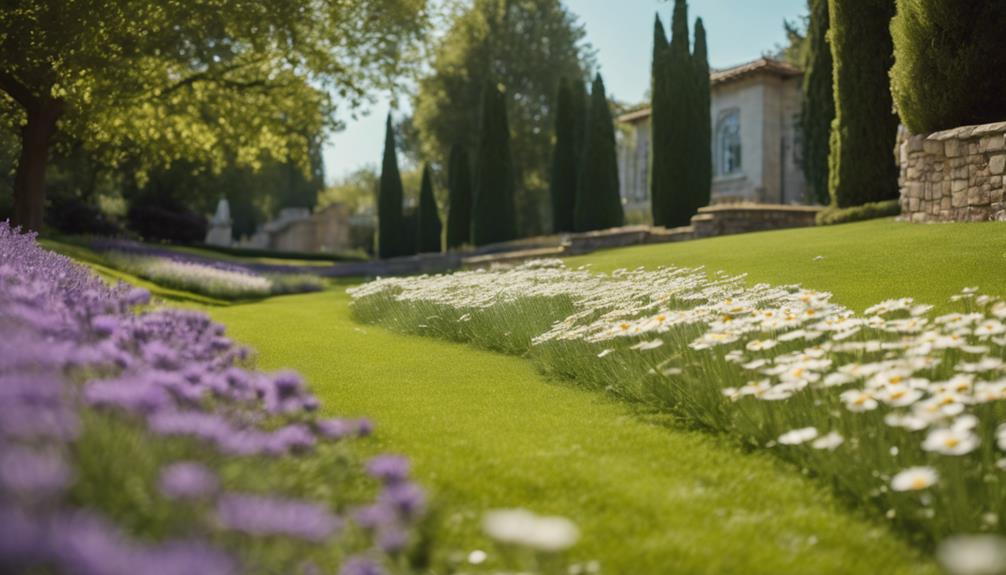
Stump Grinding Selly Oak
4 December 2024
Fence Installation Bournville
5 December 2024The Green Heart of Bearwood: Why Tree Planting Matters
Tree planting in Bearwood is not just about adding a dash of greenery; it's a vital step towards enhancing our local biodiversity and improving air quality. When we plant trees, we're not merely beautifying our streets; we're creating a sanctuary for wildlife and fostering a healthier environment for ourselves. Imagine the chirping of birds and the rustle of leaves as you stroll through a tree-lined avenue—there's something quite magical about it, isn't there?
The Importance of Thoughtful Selection and Planting
Selecting the right tree for the right spot is crucial. Consider native species that are well-adapted to our local climate and soil conditions. Trees like the silver birch or the English oak not only thrive but also support local wildlife. Planting techniques matter too; dig a hole that's twice as wide but no deeper than the root ball. This gives the tree ample room to grow while ensuring it establishes itself firmly in the ground.
Proper planting doesn't just help trees flourish; it also plays a significant role in reducing soil erosion and managing stormwater. Have you ever noticed how a well-placed tree can divert rainwater and prevent flooding? That's nature's own drainage system at work!
Aesthetic and Economic Benefits
Let's not forget the aesthetic and economic perks that come with planting trees. A well-maintained garden or a tree-lined street can significantly boost property values. Think of it as an investment in your community's future—after all, who wouldn't want to live in a picturesque area filled with greenery?
Building Community Spirit Through Tree Planting
Joining local tree planting initiatives can foster a sense of community spirit. It's a wonderful way to meet neighbours, share stories, and work towards a common goal. Plus, there's a certain satisfaction that comes from getting your hands dirty for a good cause. Whether you're a seasoned gardener or a complete novice, there's always a place for you in these community efforts.
Get Involved: Your Call to Action
So, how can you get involved? Look for local organisations or councils that host tree planting events. Grab a friend, a pair of gloves, and maybe a spade or two, and dive in! You might even learn a thing or two about tree care along the way.
If you're keen to contribute but unsure where to start, why not reach out to the Bearwood Green Team? They're always on the lookout for enthusiastic volunteers. You can contact them via their website or social media channels for information on upcoming events.
In short, tree planting in Bearwood is about so much more than just planting a seed. It's about nurturing our environment, enhancing our community, and creating a legacy for future generations. So, let's roll up our sleeves and get planting! ��
Importance of Tree Planting

The Vital Role of Tree Planting
Tree planting is not just a pastime for the green-fingered; it's a vital endeavour that supports biodiversity, enhances air quality, and provides indispensable habitats for wildlife. Think of trees as the lungs of our planet, tirelessly absorbing carbon dioxide and releasing the oxygen we depend on for life. Without them, we'd be in a bit of a pickle!
The Environmental Benefits
Imagine a world where soil erosion is a distant memory. Trees play a pivotal role in stabilising soils, reducing erosion, and promoting water retention. This means healthier local ecosystems, which are crucial for both wildlife and human communities. A classic example is the way tree roots hold the soil together, preventing landslides and maintaining the landscape's integrity.
Moreover, trees are nature's very own air filters. They absorb pollutants and dust, making the air cleaner for us to breathe. Studies have shown that urban areas with plentiful trees enjoy significantly improved air quality. So, planting a tree isn't just good for the environment; it's good for our health too. Just think about the difference a few trees can make on a busy street!
Aesthetic and Economic Value
Let's not overlook the beauty that trees bring to our surroundings. Whether you're wandering through a quaint village or navigating a bustling city, trees add a splash of colour and a breath of fresh air to any landscape. They enhance property values and can create a sense of community. Picture a local park filled with cherry blossoms in spring; it's hard to resist a smile, isn't it?
And here's a fun fact: communities with more greenery often report higher levels of happiness and well-being. It seems that trees have a knack for bringing people together and lifting spirits.
Creating Resilient Environments
In the face of climate change, tree planting becomes even more crucial. By carefully selecting and planting trees, we can create resilient environments that withstand the effects of climate change. For instance, strategically placed trees can provide shade, reducing the need for air conditioning in the summer. It's a win-win situation!
Additionally, trees contribute to ecological balance by providing habitats for various species. From colourful birds to industrious squirrels, trees are home to a diverse array of wildlife. As we continue to encroach on their habitats, planting trees becomes a necessary step in preserving these species for future generations.
Join the Movement
So, what can you do to make a difference? It's simple! Consider planting a tree in your garden or community space. Local nurseries often have a selection of native trees that are well-suited to your area. If you're unsure where to start, organisations like the Tree Council or The Woodland Trust provide excellent resources and can guide you in your tree-planting journey.
Choosing the Right Trees
Choosing the Right Trees for Your Landscape
Selecting the right tree species is crucial for ensuring not just the long-term health and growth of your greenery, but also its compatibility with the local environment. It's a bit like choosing the right partner—everyone has their preferences, but some combinations simply work better than others!
Assessing Your Environment
Before you dash off to the local garden centre, take a moment to consider your environment. Factors such as soil type, climate conditions, and the available space should be meticulously evaluated. For instance, if you live in a clay-heavy area, opting for trees that thrive in such conditions, like willows or dawn redwoods, can save you a lot of heartache down the line.
The Case for Native Species
Now, here's a little secret: native species often come out on top when it comes to resilience and ecological benefits. They not only support local wildlife, creating a thriving habitat, but they also require less maintenance. Imagine a tree that knows how to adapt to its surroundings without needing constant pampering! For example, the English oak is not only majestic but also a haven for various species, from birds to insects.
Size Matters
When selecting your tree, keep in mind its mature size, growth rate, and aesthetic qualities. You wouldn't want a towering giant in your small garden, would you? It's all about balance. Trees like Japanese maples can provide stunning autumn colours without overwhelming the space. Plus, they can add a touch of elegance and charm, making your garden a delightful retreat.
Consult the Experts
Don't hesitate to engage with local horticultural experts—they're like the Yodas of the plant world! Their knowledge can significantly enhance your selection process, ensuring that your trees not only survive but thrive in their designated spots. Whether it's advice on fertilisation or pest control, tapping into their expertise can save you time, money, and a fair bit of frustration.
The Bigger Picture
Ultimately, making the right tree choice can foster a balanced ecosystem, boost your property's value, and contribute positively to your community's green infrastructure. Think of it as planting the seeds for future generations—literally!
So, if you're ready to embark on your tree-planting journey, remember to take the time to choose wisely. Not only will your future self thank you, but so will the local wildlife.
If you need more personalised advice or have questions, feel free to reach out! Your perfect tree is just a conversation away.
Tree Planting Techniques
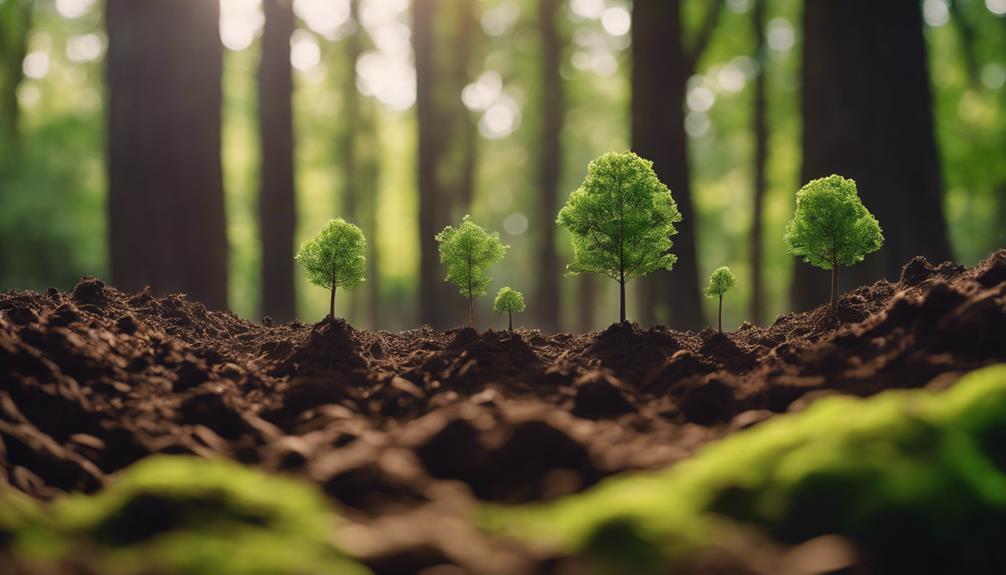
Essential Tree Planting Techniques for a Thriving Landscape
Planting a tree might seem as simple as digging a hole and dropping it in, but there's a bit more finesse required to ensure your leafy friend not only survives but thrives. Whether you're a seasoned gardener or a newcomer to the green scene, understanding the nuances of proper planting techniques is key to fostering robust trees that can withstand the test of time.
Choosing the Right Spot
First things first, location matters! Select a site that offers ample sunlight, proper drainage, and adequate space for the tree to spread its roots and branches when it reaches maturity. Think of it like choosing a flat for your new mate – you wouldn't want them cramped up in a dark corner, would you?
Digging the Perfect Hole
Now, onto the digging! Aim for a hole that's at least twice the width of the root ball and equal in depth. This will prevent the roots from girdling, which is a fancy way of saying they can get tangled up and suffocate themselves. When you're digging, it's not about winning a race; take your time to ensure the hole is just right.
Handling the Tree with Care
Next, let's talk trees. When you're ready to remove your new tree from its container, do so with a gentle touch. Minimising disturbance to the roots is crucial. Picture it like unwrapping a present – you want to reveal the treasure inside without tearing the wrapping paper.
Planting the Tree
Once out of the pot, place your tree in the centre of the hole, ensuring that the root flare (that's where the roots meet the trunk) is level with the surrounding soil. This is a critical step because if the root flare is too deep, the tree may struggle to breathe – and nobody wants a gasping tree!
Backfilling and Watering
When it comes to backfilling, use native soil, and be careful not to compact it too much. Think of it as tucking the tree into bed – you want it snug but not so tight it can't move. After you've filled in the hole, give it a good watering. This not only hydrates the tree but also helps to eliminate any pesky air pockets that could hinder root growth.
Mulching: The Tree's Best Friend
Don't forget to add a layer of mulch around the base of the tree. This is like giving your tree a cosy blanket; it helps with moisture retention and keeps those annoying weeds at bay. Just remember to keep the mulch a few inches away from the trunk to avoid any unwanted rot.
Conclusion: Cultivating Healthy, Resilient Trees
By following these essential techniques, you're setting the stage for healthy, resilient trees that can enhance your landscape for years to come. Picture yourself in a few years, sipping tea under the shade of your flourishing tree, feeling like a proud parent.
Long-term Care for Trees
Nurturing Your Trees: A Guide to Long-Term Care
When it comes to ensuring the long-term health of newly planted trees, consistent care is essential. Think of your tree as a new friend in your garden; it needs a bit of attention and love to flourish. Let's dive into the key aspects of tree care: watering, pruning, and fertilisation.
The Importance of Watering
In the early years, a tree's roots are like a toddler learning to walk—they need a solid foundation to grow strong. Adequate watering is crucial, especially during those first few years. Aim to water deeply and less frequently; this approach encourages the tree to develop a robust root system that can withstand periods of drought. A good rule of thumb? Water your young tree once a week, increasing frequency during hot spells. Just imagine your tree sipping from a refreshing drink after a hot day—it's quite the sight!
Pruning for Prosperity
Now, let's talk about pruning. This isn't just a fancy term; it's a vital practice that helps your tree thrive. Pruning should be done judiciously, focusing on removing any dead or diseased branches. This not only improves the tree's structural integrity but also enhances its aesthetic appeal. Think of it like giving your tree a stylish haircut—one that will make it stand tall and proud!
Fertilisation: Feeding Your Tree
Fertilisation is like treating your tree to a hearty meal. Providing the right nutrients stimulates growth and fortifies your tree against pesky pests and diseases. Opt for a slow-release fertiliser tailored to your tree's specific needs. For instance, if you're caring for an oak, a fertiliser rich in nitrogen will do wonders. Just be sure to follow the recommended guidelines—too much of a good thing can lead to a buffet of problems!
Keeping an Eye Out: Monitoring Your Tree
As you embark on this journey of tree care, keeping an eye out for signs of distress is paramount. Discolouration, wilting leaves, or unusual growth patterns can indicate your tree needs a helping hand. Regular checks will allow you to act swiftly, preventing minor issues from snowballing into major headaches. It's like being a detective in your garden—always on the lookout for clues!
The Long-Term Commitment
Ultimately, a commitment to ongoing maintenance fosters a thriving environment for your trees. They not only beautify your landscape but also contribute significantly to the ecosystem, providing shade and supporting wildlife. With proper care, your trees will stand tall, creating a legacy that can last for generations.
Community Benefits of Trees
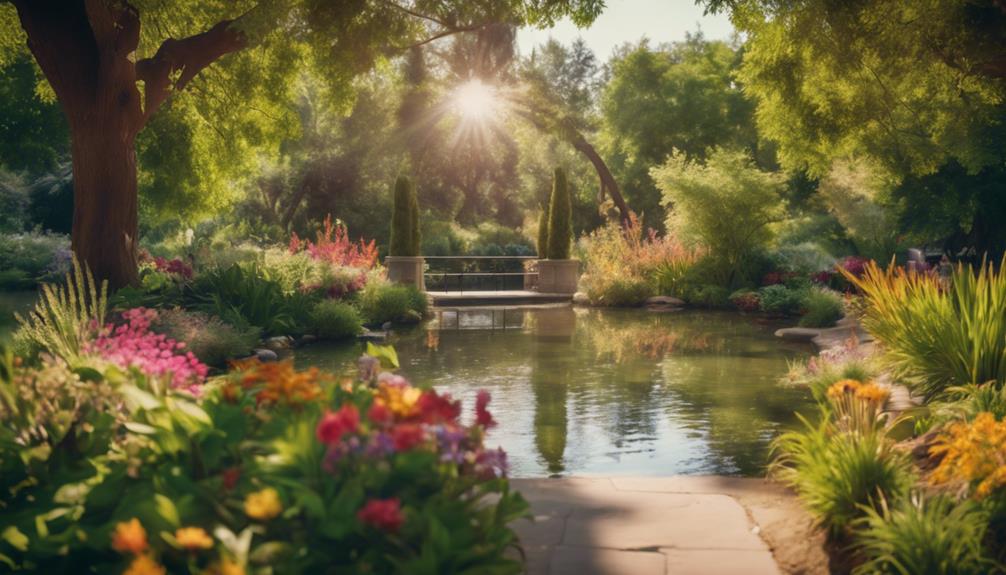
The Vital Role of Trees in Our Communities
Trees are not just a pretty sight; they are invaluable assets that breathe life into our communities. They provide a plethora of environmental, social, and economic benefits that significantly enhance the quality of life for all residents.
Environmental Benefits
Let's start with the environmental perks. Trees work tirelessly to improve air quality by absorbing pollutants and releasing oxygen. Think of them as nature's air purifiers! They also help to mitigate urban heat, creating a cooler microclimate. In fact, a well-placed tree can lower the temperature of its surroundings by several degrees during those sizzling summer months. Additionally, trees support biodiversity by offering habitats to various wildlife. From birds chirping in the branches to squirrels darting about, trees are essential to maintaining the delicate balance of our ecosystems.
Social Benefits
Now, let's talk about the social aspect. Trees do wonders for our mental health and community spirit. Green spaces, filled with trees, encourage outdoor activities like picnics, dog walking, and leisurely strolls. They become natural gathering spots where neighbours can catch up and children can play. In a world that often feels rushed and disconnected, these spaces foster community cohesion and create a sense of belonging—essential ingredients for our well-being.
Economic Benefits
On the economic front, the influence of trees is equally impressive. Well-maintained trees can significantly increase property values. Homebuyers are often willing to pay a premium for a property with a beautiful garden or tree-lined street. Moreover, attractive green areas draw in tourists, providing a boost to local businesses. Just think about how a charming park can become a bustling hub for cafes and shops. It's a win-win situation!
Stormwater Management
Let's not forget trees' role in stormwater management. They act like sponges, soaking up rainwater and reducing the risk of flooding. This is particularly important in urban areas where hard surfaces prevent water absorption. By promoting sustainable urban development through tree planting, we're not just beautifying our cities; we're also protecting them.
A Call to Action
In summary, the multitude of benefits that trees provide highlights the importance of tree planting initiatives. They bolster community resilience and pave the way for a sustainable future. So, why not get involved? Whether it's participating in local tree planting events or simply taking better care of the trees in your neighbourhood, every little effort counts.
If you're interested in learning more about how you can make a difference in your community, don't hesitate to reach out! Together, we can ensure that our urban environments thrive for generations to come.
Remember: The more trees we plant, the greener our future!
Frequently Asked Questions
What Is the Best Time for Planting Trees?
When to Plant Trees: Spring or Fall?
Ah, the age-old question: when is the best time to plant trees—spring or fall? It's a bit like asking whether tea should be served with milk or lemon; both sides have their merits!
Spring: A Time for New Beginnings
Springtime is often touted as the prime season for planting trees. Why, you ask? Well, as the days grow longer and warmer, trees begin their awakening from winter slumber. This season provides a fantastic opportunity for establishing roots before the scorching summer heat arrives. Just imagine your sapling, stretching its roots deep into the soil, soaking up nutrients like a sponge!
However, the transition into summer can be a tricky one for young trees. Without sufficient moisture, they might struggle to adjust. So, if you opt for spring planting, be sure to keep an eye on watering, particularly during those sweltering months.
Fall: Nature's Gentle Embrace
On the other hand, fall presents a compelling case, especially in milder climates. As temperatures begin to drop, the soil remains warm, allowing roots to grow and establish themselves before winter sets in. Think of it as tucking your tree into a cosy bed, ready to dream through the colder months.
Additionally, fall planting reduces competition from weeds, which are often less active during this season. With fewer distractions, your tree can focus on growing strong and resilient.
Consider Your Climate
Ultimately, the choice between spring and fall largely hinges on your local climate. In regions with harsh winters, spring planting might be preferable to avoid exposing young trees to frost. Conversely, in areas with milder winters, fall planting can yield excellent results.
A Little Humour to Brighten Your Day
You might wonder, “What if I plant a tree in summer?” Well, you could try, but it's a bit like trying to run a marathon in flip-flops—possible, but not advisable!
Conclusion: Time to Get Planting!
In conclusion, the best time for planting trees depends on various factors, including your local climate and the specific tree species you choose. Spring offers a fresh start, while fall provides a gentle transition into winter. So, whether you're planting a majestic oak or a cheerful cherry blossom, take a moment to consider the timing that suits your garden best.
Ready to dig in? Grab your spade, choose your season, and let's get those trees planted! If you have any questions or need advice, feel free to reach out. Happy planting!
Do I Need Permission to Plant a Tree in My Garden?
Do You Need Permission to Plant a Tree in Your Garden?
Ah, the joys of gardening! There's nothing quite like the satisfaction of planting a tree, watching it flourish, and knowing you're contributing to the environment. But before you grab your spade and head outside, it's wise to consider whether you need permission to plant that leafy friend in your garden.
Local Regulations Matter
First and foremost, local regulations play a pivotal role in your tree-planting plans. Different councils across the UK have varied rules regarding tree planting, especially when it comes to protected species or those in conservation areas. For instance, if you live in a designated conservation area, you may need to notify your local authority before planting. This ensures that the natural beauty of your surroundings is preserved. It's akin to asking for permission before borrowing a friend's prized vinyl record – a little courtesy goes a long way!
Property Boundaries: Know Your Limits
Another crucial factor is your property boundaries. You wouldn't want to be the neighbour who inadvertently encroaches on someone else's space, right? Ideally, you should ensure that the tree you plan to plant sits comfortably within your own garden. If there's a chance it might grow over the boundary, a quick chat with your neighbour could save you from future disputes. After all, trees can be quite the conversation starters—just ask any squirrel!
Tree Species: Some Are Special
Not all trees are created equal. Certain tree species may have specific regulations governing their planting. For example, some may be protected under local laws due to their ecological significance. It's worth doing a bit of homework on the type of tree you wish to plant. The Tree Council offers excellent resources on native species and their planting guidelines, proving that knowledge truly is power.
The Importance of Consultation
Before you dig in, I recommend having a chat with your local council. They can provide clarity on any necessary permits or guidelines. It's like checking the weather before a picnic—better safe than sorry! You might also want to review your property deeds, as these documents often contain valuable information regarding land use and restrictions.
In Conclusion
What Is the Best Tree Planting Charity in the Uk?
Discover the Woodland Trust: The Premier Tree Planting Charity in the UK
When it comes to tree planting charities in the UK, the Woodland Trust stands out as a beacon of environmental stewardship. Since its inception in 1972, this remarkable organisation has planted more than 47 million trees across the country. It's not just about numbers; it's about fostering a love for nature and enhancing our local environments.
A Commitment to Community and Sustainability
The Woodland Trust isn't just putting trees in the ground; they are cultivating a community of environmentally conscious citizens. Their projects often involve local communities, schools, and volunteers, turning the act of planting trees into a collective experience. Imagine the joy of families and friends coming together, sleeves rolled up, planting saplings and sharing stories among the trees!
Their commitment to sustainability is evident in every initiative they undertake. They advocate for using native species, which not only supports local wildlife but also ensures that the environment thrives in the long run. In a world where environmental issues are often overwhelming, the Woodland Trust offers a tangible way to make a difference—one tree at a time.
Educational Initiatives That Inspire
Education is at the heart of the Woodland Trust's mission. They offer a plethora of resources for schools, helping to instil a sense of responsibility for our planet in the younger generation. Through engaging educational programmes, children learn about the importance of trees, biodiversity, and ecological balance. It's about planting seeds of knowledge that can grow into a lifelong commitment to protecting our planet.
Why Choose the Woodland Trust?
So, why should you consider supporting the Woodland Trust? For starters, they have a proven track record and are trusted by millions. Their transparency and dedication to their cause mean that every penny you donate goes directly to tree planting and conservation efforts. Plus, if you're looking to get involved, there are plenty of volunteering opportunities. Whether you fancy a day out in nature or want to make a lasting impact, there's a place for you here.
Get Involved!
Feeling inspired? Why not take action today? You can donate, volunteer, or even organise your own tree planting event through the Woodland Trust. Visit their website at [woodlandtrust.org.uk](https://www.woodlandtrust.org.uk) to learn more about how you can contribute to this noble cause. Remember, every little bit helps, and together we can create a greener, healthier planet.
Does the Woodland Trust Plant Trees?
Does the Woodland Trust Plant Trees?
Absolutely! The Woodland Trust is deeply committed to tree planting initiatives across the United Kingdom. Their mission? To restore our native woodlands, boost biodiversity, and tackle the pressing issue of climate change. It's not just about planting trees; it's about nurturing a thriving ecosystem that benefits everyone.
Restoring Native Woodlands
One of the key focuses of the Woodland Trust is the restoration of native woodlands. Why is this important? Well, native trees are the backbone of our local ecosystems. They provide habitat for countless species and contribute to the overall health of our environment. Think of it as giving a much-needed hug to our planet, which is something we can all get behind!
Enhancing Biodiversity
By planting native trees, the Woodland Trust is enhancing biodiversity in our woodlands. This means that more species, from the tiniest insects to majestic birds, can thrive in these restored habitats. It's not just about the trees; it's about creating a vibrant community of life. Imagine walking through a lush forest, with the sun filtering through the leaves, and the sounds of nature surrounding you. That's the kind of world we're striving for!
Combating Climate Change
In today's world, combating climate change is more crucial than ever. Trees play a vital role in this fight. They absorb carbon dioxide, produce oxygen, and help to regulate temperatures. The Woodland Trust understands this and actively works to implement sustainable practices in their tree planting activities. Every sapling planted is a step towards a cooler, greener future.
Community Involvement
What's more, the Woodland Trust believes in the power of community involvement. They organise events where individuals and families can roll up their sleeves and get involved in tree planting. It's a fantastic way to connect with nature, learn something new, and contribute to a meaningful cause. Plus, there's nothing quite like the satisfaction of planting a tree and knowing you've made a difference!
Join the Movement
So, if you're passionate about the environment and want to make a tangible impact, consider supporting the Woodland Trust. Whether it's by donating, volunteering, or simply spreading the word, every little bit helps. Why not visit their website to learn more about upcoming events or how you can get involved? Together, we can plant the seeds for a brighter, greener future.

